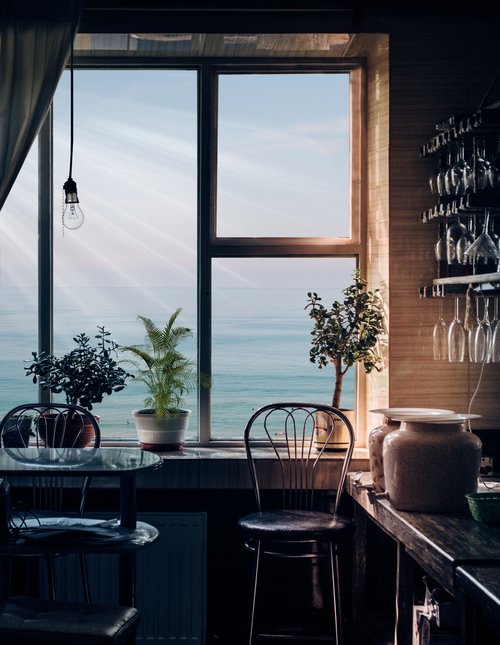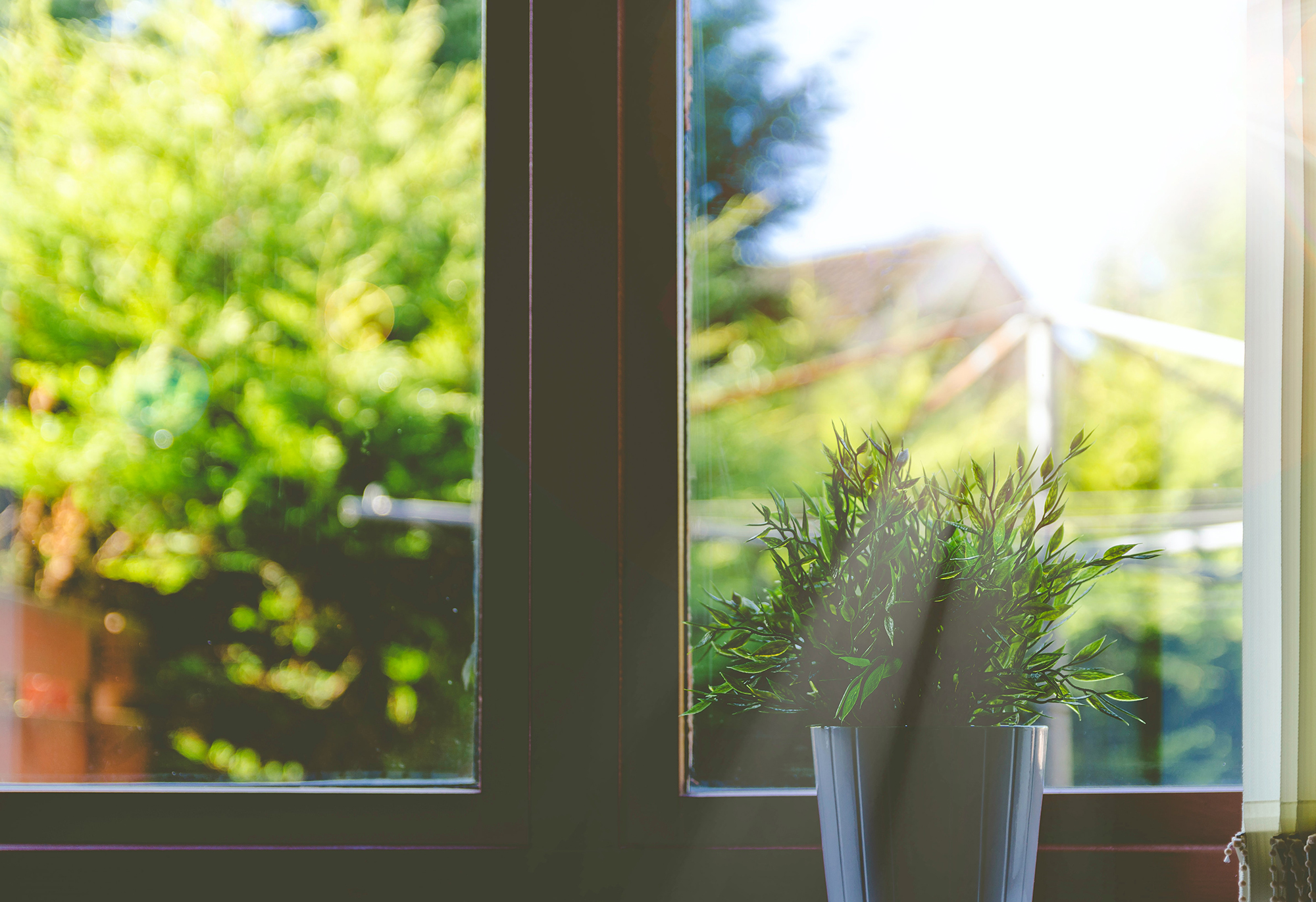Whether you are looking to update the style of your windows or looking for more energy efficiency, selecting replacement windows can be complicated. There is much to consider and the choices you make affect not only the price of the windows but the amount of energy you’ll save.
We’ve broken down the window options for you. You have choices in window style, frame material, and glass options. It’s best to consult with a contractor to make the best selection for your home.

Window styles
Windows come in a variety of styles, or functions. Your home may have some of each type of window, or just a few types.
Fixed
As the name implies, fixed windows don’t open or move. Your home may have a large picture window, that is a fixed window. You may also have decorative fixed windows in the shape of a half circle or hexagon.
Casement
Casement windows open outward with the use of a crank (they’re sometimes called “crank out windows”). They offer great ventilation and typically have less air leakage than other styles.
Single hung
Single hung windows have an operable portion on the bottom of the window. The opening can be raised to adjust the amount of ventilation.
Double hung
Double hung windows have two operable portions: on the top and bottom. The bottom can be raised and/or the top portion lowered to provide ventilation.
Sliding
Sliding windows, or sliders, move horizontally. They come in single-sliding or double-sliding varieties.

Window frame materials
Window frames surround the glass pane and the window opening. Since the window’s air seal is made at the frame, the material you choose affects both the effectiveness of the window and your energy use.
Wood
Most often found in older or historic homes and buildings, wood frame windows offer the best insulation, but generally require more maintenance and upkeep than other frame options. Many wood windows are coated on the exterior to protect the frame from damage and make maintenance easier.
Vinyl
Vinyl windows are the most popular, as they are durable, lower in cost, and energy efficient. They are available in a limited number of colors. The outside of the window can’t be painted, though, as the paint won’t stick to the vinyl.
Fiberglass
Fiberglass windows are fairly new to the industry, but they are some of the most energy efficient windows on the market. They have excellent thermal stability, meaning they won’t warp, shrink, rot, swell, or corrode. However, they are generally more expensive than the other options.
Wood clad
Wood clad windows feature a vinyl or aluminum exterior frame with a wood interior. This makes them low maintenance and energy efficient. They can be prone to water intrusion if not installed correctly with a sill pan.
Aluminum
Aluminum windows are less expensive than other types, but they are also less energy efficient and often experience heat loss and condensation around the frame. This can lead to mold or mildew growth, especially in our moist climate.
Glass
When selecting the glass that goes into your windows, there are a few options to think about. All of these affect the energy efficiency of your windows, which can save you significantly on your utility bills. The best bet is to choose windows that are Energy Star rated, as they are designed to save an average of 12% in energy costs.
Glass layers
Replacement windows are available with one, two, or three layers of glass. The more layers of glass, the more energy efficient the window will be. The air gap between the layers provides insulation and prevents heat flow through the glass.
Gases
Windows with multiple layers of glass are sometimes filled with gases to improve the performance of the window. Generally, one of two gases is used: argon or krypton. Both improve the efficiency of the glass, with krypton providing slightly better performance.
U-factor
A window’s U-factor is a measurement of its ability to keep heat in. It is the inverse of an R-factor, which is a measure of insulation. For windows it ranges from 0.20 to 1.20, with lower numbers providing better protection from heat loss.
SHGC
The solar heat gain coefficient (SHGC) is a measure of how well a window blocks unwanted heat from the sun. It ranges from 0 to 1, with lower numbers providing better protection.
Low-E coating
A transparent low-E coating is applied to some windows to improve the efficiency of the glass by reflecting heat while letting light in. It can be applied to the inside or outside of the glass, depending on the climate.
Visible transmittance
Visible transmittance is a measure of how much visible light a window lets in. It’s measured between 0 and 1, with increasing numbers signifying increasing amounts of light.

Choosing the right window
It’s best to consult with a contractor familiar with your local climate when choosing replacement windows. They have the expertise needed to select the correct style, frame material, and glass options to meet your needs and save you money and energy.


